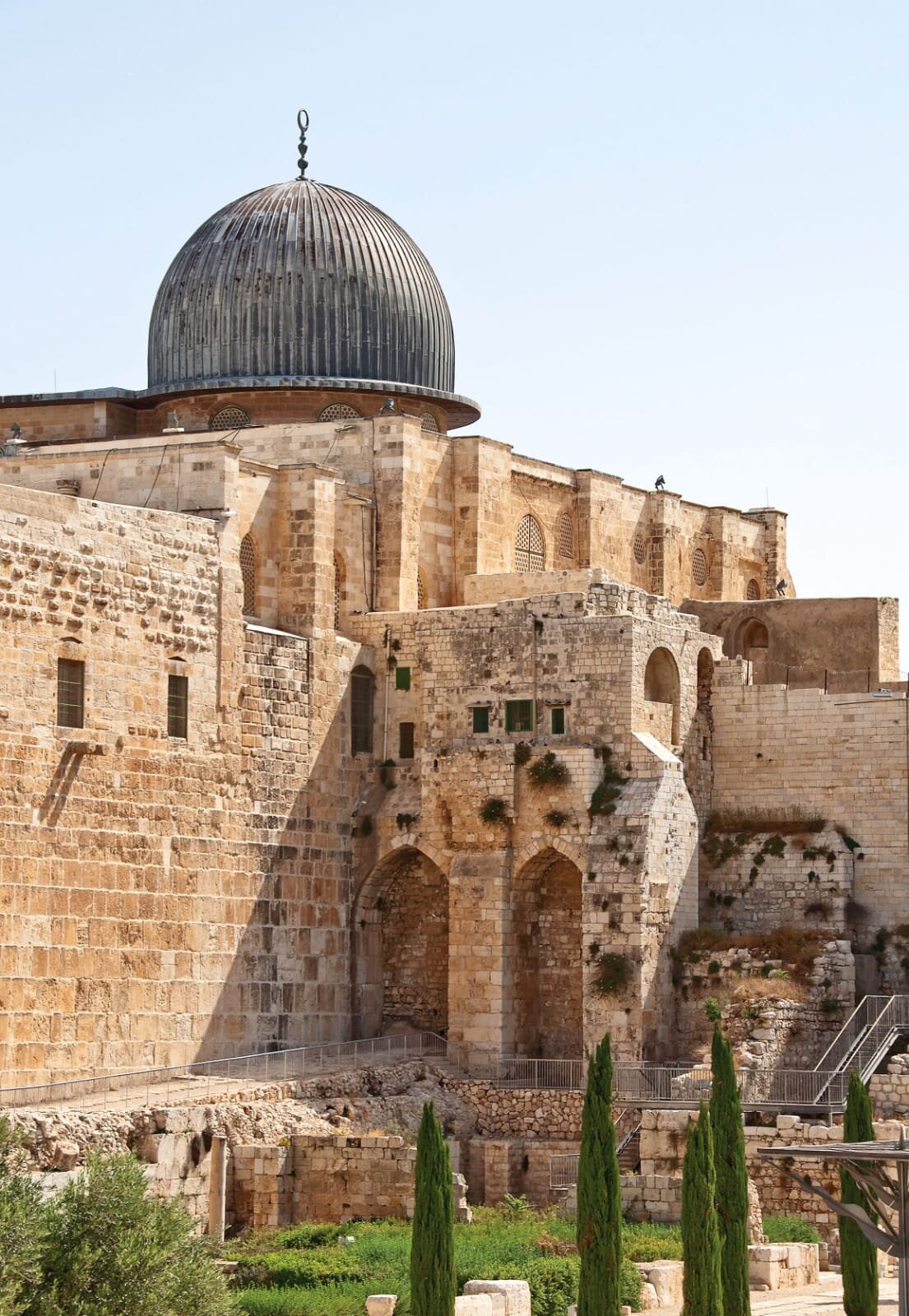Al-Aqsa Mosque
Update: Friday 21 May. The post below was written in response to the storming of the Al-Aqsa Mosque on Monday 10 May. We are deeply saddened to see further reports of another storming of the Al-Aqsa Mosque with tear gas again used against worshippers at prayer.
Pictured is Al-Aqsa Mosque in East Jerusalem. The mosque is a holy site in Islam. Translating as 'the farthest mosque', it is believed that Muhammad was transported from the Great Mosque of Mecca to this location during the Night Journey – a two-part spiritual and physical trip in which he also visited the seven levels of heaven and discussed with God how many times a day the faithful should pray.
The mosque dates in various forms from the 7th century but was captured in 1099 by Christian crusaders and used as a headquarters for the Knights Templar. It remained under crusader control until restored to Muslim jurisdiction a century later by Saladin's forces.
The contemporary mosque consists of a central large portico with a roof supported by marble pillars. It runs from north to south and is covered by a gable roof ending with a spherical dome supported by four stone pillars. The dome incorporates an internal and external layer (like the nearby Dome of the Rock). Its interior is decorated with a mosaic of faience, and its outer parts were covered with golden brass plates, recently replaced with lead plates. The mosque sits on Temple Mount, a hill in the Old City of Jerusalem venerated in Judaism, Christianity and Islam alike where Arabic peoples of all three religions have lived and worshipped for centuries.
Today, as a millennium ago, Muslims again face torment while at prayer in sacred buildings. Last Monday, Al-Aqsa Mosque was stormed by police using stun grenades and tear gas to target worshipers observing Ramadan – a key catalyst in a wave of aggression which has seen many other violent acts which millions around the world have now taken to the streets to raise their voices in protest against.
The storming of the Al-Aqsa Mosque, and related events are stark reminders that architecture, and land it sits on, are always deeply political – objects of liberation, repression and contestation. To truly understand the city, and to act in making it more open, accessible and equitable for all, it is essential to understand the history, politics and power imbalances behind it.
Other organisations dedicated to architectural research and education have been exploring the political history of architecture in Israel and Palestine for years. We are happy to share some links to their work here:
The 27th issue of architecture and urbanism magazine, the Funambulist is entitled ‘Learning With Palestine’ and is free to read online here.
Architectural investigators and Turner Prize nominees, Forensic Architecture have been using architectural techniques to research events in Israel and Palestine for a number of years. Their work in the region is available here.
In 2014 Archbishop Desmond Tutu concluded the 25th congress of the International Union of Architects, which he was patron of, by calling on architects not to support the construction of settlements on occupied Palestinian land. You can read Tutu’s full statement which was published by the Architects’ Journal here.

